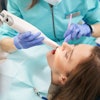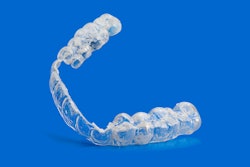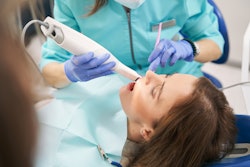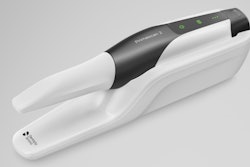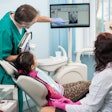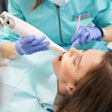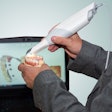
Custom resilient attachments designed with CAD-CAM may provide improved angulation compensation for implant-supported prostheses compared to standard types. The technique was published on September 19 in the Journal of Prosthetic Dentistry.
This approach simplifies the design and manufacturing process, offering a versatile restorative option when other attachment systems may be unsuitable, the authors wrote.
"Digital technology enables the dental laboratory technician to streamline the design and manufacture of custom resilient attachments and a metal-acrylic resin implant overdenture prosthesis," wrote the authors, led by Dr. Elena Muehlemann of the University of Zurich Center for Dental Medicine in Switzerland.
A 68-year-old edentulous patient who had been using cement-retained implant-supported dentures presented with peri-implantitis around multiple implants. After removing the dentures and treating the condition, one implant was extracted, leaving four maxillary implants, including three Bicon implants and one with significant labial angulation, they wrote.
For the maxilla, angled 15° Brevis abutments with ball attachments were used on the Bicon implants and a custom CAD-CAM locator attachment was fabricated for the implant. The mandibular reconstruction employed four locator attachments supporting a removable overdenture.
The treatment process began with taking definitive implant impressions of both arches using polyether material. The maxillomandibular relationship was then recorded with wax rims and an intraoral gothic arch tracing. The casts were mounted on a semiadjustable articulator for precision followed by arranging the teeth in a lingualized occlusal scheme, they wrote.
Next, the tooth arrangements and casts were digitized using a dental scanner. A custom locator attachment was designed and manufactured from titanium alloy, accounting for the available space and implant angulation.
The overdenture framework was additively manufactured using the integrated custom attachment and the overdentures were processed with autopolymerizing acrylic resin. Finally, the completed overdentures, along with the resilient attachment, were delivered to the patient, they wrote.
However, despite advancements in technology, conventional methods like transferring resin teeth to a metal framework with a silicone guide and ensuring accurate intraoral registration and fixation of custom attachments are still necessary during insertion, they added.
"CAD-CAM custom resilient attachments offer greater angulation compensation than standard attachments when clinically required while accounting for biological, mechanical, and esthetic factors," Muehlemann et al wrote.



